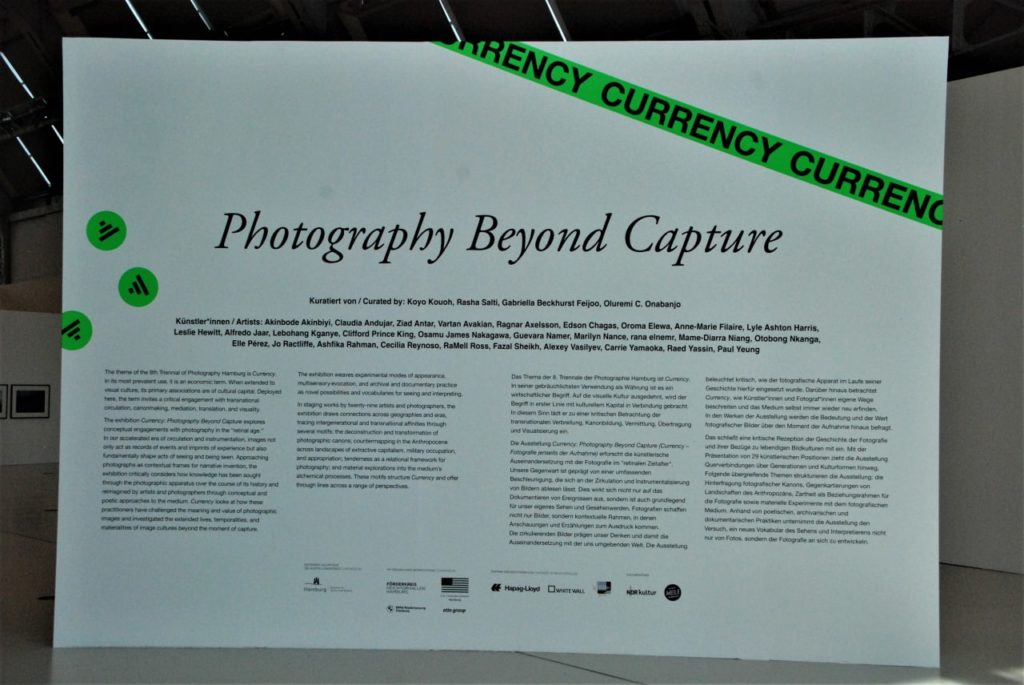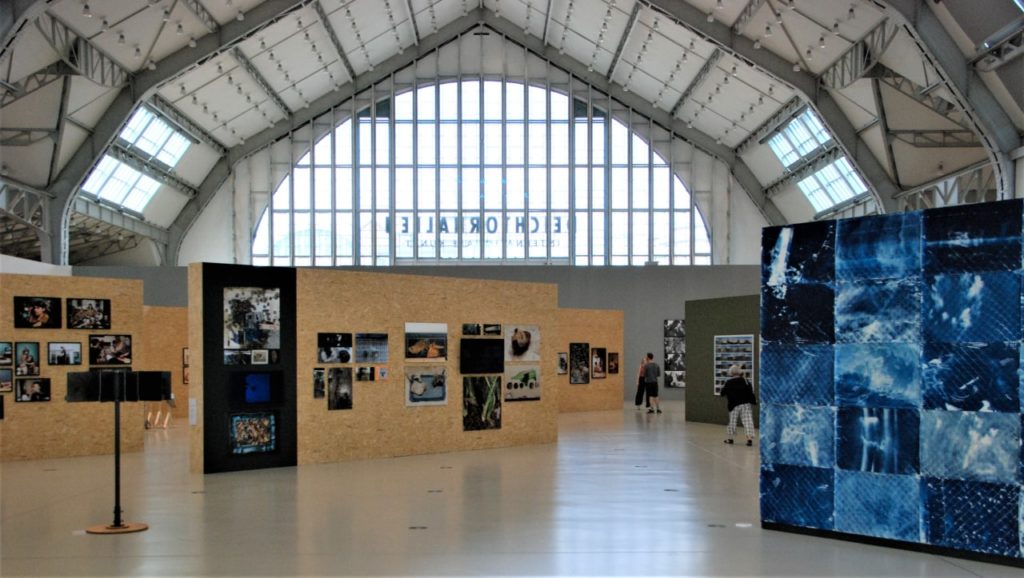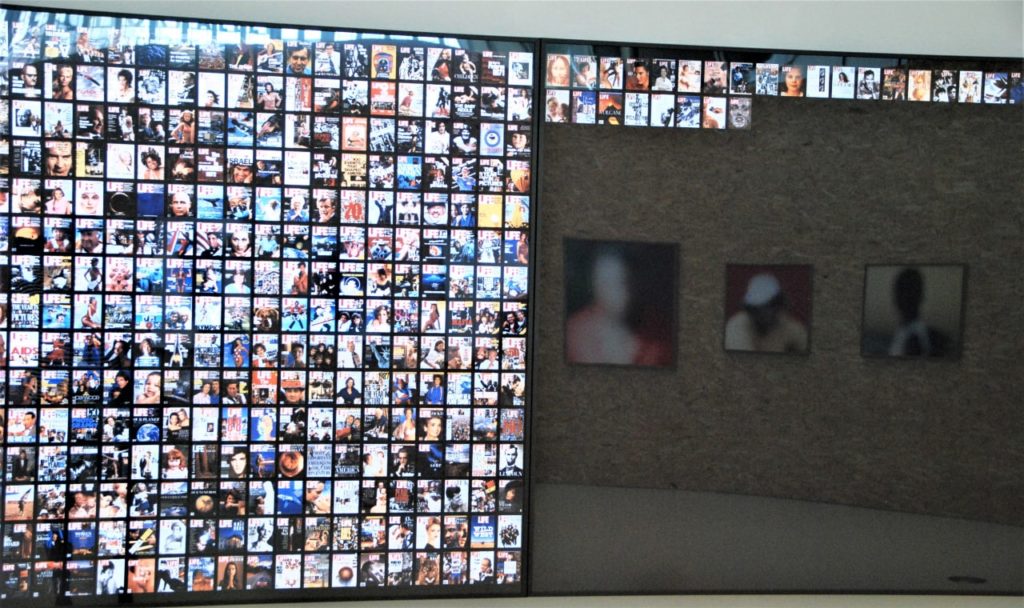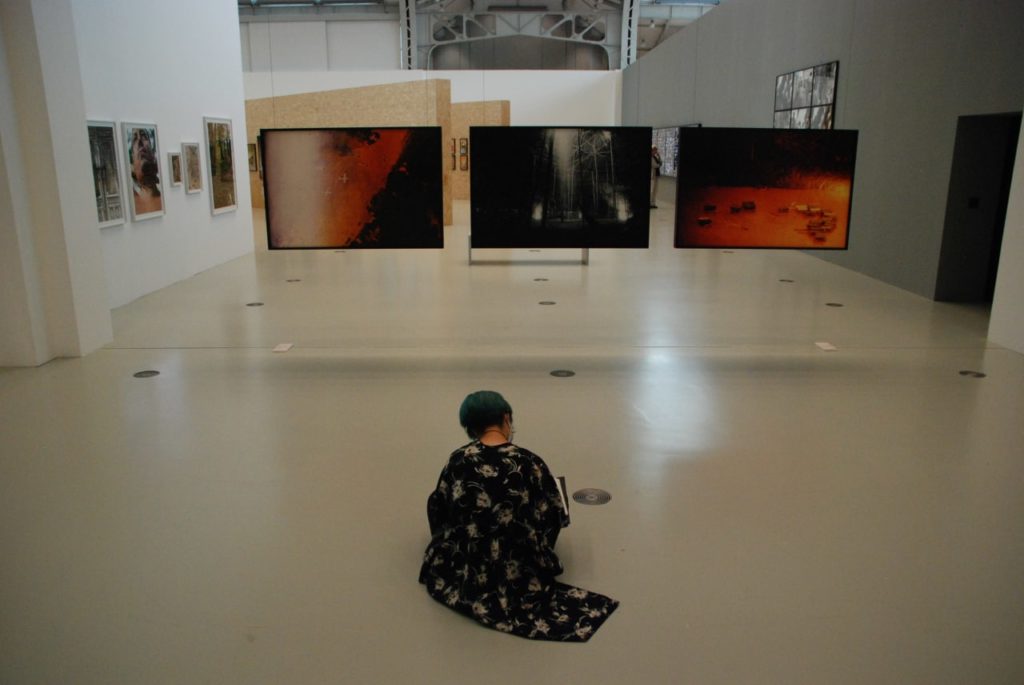What happens after Cartier-Bresson’s decisive moment? Photographic images, this exhibition argues, “fundamentally shape acts of seeing and being seen.” Serving as “contextual frames for narrative invention,” photographs define to some extent what qualifies as knowledge. Photography produces knowledge but also confirms established ways of knowledge production by operating within established frames and conventions. In contrast, Currency – Photography Beyond Capture “looks at how … practitioners have challenged the meaning and value of photographic images and investigated the extended lives, temporalities, and materialities of image cultures beyond the moment of capture.”

Curated by Koyo Kouoh, Rasha Salti, Gabriella Beckhurst Feijoo, and Oluremi C. Onabanjo, Currency presents 29 artistic positions and “draws connections across geographies and eras, tracing intergenerational and transnational affinities through several motifs: the deconstruction and transformation of photographic canons; countermapping in the Anthropocene across landscapes of extractive capitalism, military occupation, and appropriation; tenderness as a relational framework for photography; and material explorations into the medium’s alchemical processes.”

Playing with ideas pertaining to visibility and invisibility as well as inclusion and exclusion, for example, Raed Yassin erased found portrait photographs which, due to their bearing witness to the existence of individual people of whom the artist knew nothing, had started haunting and intimidating him. To escape from these photographs’ haunting power, Yassin covered the photographs with paint, “leaving only a faint trace of their bodily outlines within the frame” thus alluding to the transitoriness of both memories and photographic images.
Likewise, Mame-Diarra Niang, by creating blurred “shadow memories,” engages with photography’s tendency to both create and destroy memories. “Photographs of people I know and love,” James Elkins writes, “are actually a poison to memory, because they remain strong while my memories weaken.” Instead of remembering people, we remember images of people. However, through permanent recontextualization, the distance between the people depicted in the image and us increases over time rather than being permanently and unalterably fixed. The photographs may remain strong, but the meaning we assign to them changes. In Niang’s words, “even the most persistent conception of identity dissolves in front of us.” With such dissolution, our own identity becomes fragile, too, open to negotiation.
Taking a less subtle approach, Alfredo Jaar searched – largely in vain – for Africa on the covers of LIFE Magazine, reproduced in a huge tableau consisting of 2128 covers. Fewer than a dozen covers are dedicated to African people and issues and show mainly “fauna, famine, or war […] thus reinforcing the archetypal non-representation of the continent in the realm of mainstream Western culture.” Reflections of Niang’s work in Jaar’s installation invite the visitor to engage in a dialogue among different forms of visual representation.

In the exhibition, a photographic “countercanon“ can be explored put together by “artists and photographers who have sought to deconstruct and transform photographic canons and the modes of seeing they produce” thus challenging “institutional histories of photography – both cultural and sociopolitical – [which] produce narrative norms that are routinely leveraged by corporate media interests.” As always, the question is whether a countercanon manages to effectively transform the established canon or, in some perverse way, contributes to its confirmation.
A different form of engagement is illustrated in the below photograph taken at the exhibition of a visitor communicating inter-actively in her own individual way with selected images thus testifying to the longevity of photographic images beyond capture.

Artists: Akinbode Akinbiyi, Claudia Andujar, Ziad Antar, Vartan Avakian, Ragnar Axelsson, Edson Chagas, Oroma Elewa, Anne-Marie Filaire, Lyle Ashton Harris, Leslie Hewitt, Alfredo Jaar, Lebohang Kganye, Clifford Prince King, Osamu James Nakagawa, Guevara Namer, Marilyn Nance, rana einemr, Mame-Diarra Niang, Otobong Nkanga, Elle Pérez, Jo Ractliffe, Ashfika Rahman, Cecilia Reynoso, RaMell Ross, Fazal Sheikh, Alexey Vasilyev, Carrie Yamaoka, Raed Yassin, and Paul Yeung.
Deichtorhallen Hamburg (8th Triennial of Photography Hamburg), until 18 September 2022
Reference
James Elkins, What Photography Is (New York and London: Routledge, 2011)
(All photographs taken at the exhibition, 4 August 2022)
